(2H2)Formic acid
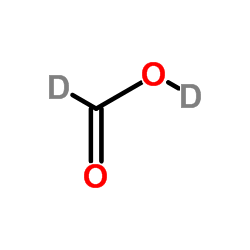
(2H2)Formic acid structure
|
Common Name | (2H2)Formic acid | ||
|---|---|---|---|---|
| CAS Number | 920-42-3 | Molecular Weight | 48.038 | |
| Density | 1.2±0.1 g/cm3 | Boiling Point | 100.6±9.0 °C at 760 mmHg | |
| Molecular Formula | CD2O2 | Melting Point | 8.2-8.4ºC(lit.) | |
| MSDS | Chinese USA | Flash Point | 29.9±13.4 °C | |
| Symbol |


GHS02, GHS05 |
Signal Word | Danger | |
| Name | Formic acid-d2 |
|---|---|
| Synonym | More Synonyms |
| Density | 1.2±0.1 g/cm3 |
|---|---|
| Boiling Point | 100.6±9.0 °C at 760 mmHg |
| Melting Point | 8.2-8.4ºC(lit.) |
| Molecular Formula | CD2O2 |
| Molecular Weight | 48.038 |
| Flash Point | 29.9±13.4 °C |
| Exact Mass | 48.018032 |
| PSA | 37.30000 |
| LogP | -0.54 |
| Vapour Pressure | 36.5±0.2 mmHg at 25°C |
| Index of Refraction | 1.342 |
| Storage condition | 0-6°C |
|
SECTION 1: Identification of the substance/mixture and of the company/undertaking Product identifiers Product name: Formic acid-d2 REACH No.: A registration number is not available for this substance as the substance or its uses are exempted from registration, the annual tonnage does not require a registration or the registration is envisaged for a later registration deadline.
CAS-No.: 920-42-3 Relevant identified uses of the substance or mixture and uses advised against Identified uses: Laboratory chemicals, Manufacture of substances SECTION 2: Hazards identification Classification of the substance or mixture Classification according to Regulation (EC) No 1272/2008 Flammable liquids (Category 3), H226 Skin corrosion (Category 1A), H314 For the full text of the H-Statements mentioned in this Section, see Section 16. Classification according to EU Directives 67/548/EEC or 1999/45/EC C CorrosiveR10, R35 For the full text of the R-phrases mentioned in this Section, see Section 16. Label elements Labelling according Regulation (EC) No 1272/2008 Pictogram Signal wordDanger Hazard statement(s) H226Flammable liquid and vapour. H314Causes severe skin burns and eye damage. Precautionary statement(s) P280Wear protective gloves/ protective clothing/ eye protection/ face protection. P305 + P351 + P338IF IN EYES: Rinse cautiously with water for several minutes. Remove contact lenses, if present and easy to do. Continue rinsing. P310Immediately call a POISON CENTER or doctor/ physician. Supplemental Hazardnone Statements Other hazards - none SECTION 3: Composition/information on ingredients Substances Formula: CD2O2 Molecular Weight: 48,04 g/mol CAS-No.: 920-42-3 EC-No.: 213-057-3 Hazardous ingredients according to Regulation (EC) No 1272/2008 ComponentClassificationConcentration [2H]formic [2]acid CAS-No.920-42-3Flam. Liq. 3; Skin Corr. 1A;<= 100 % EC-No.213-057-3H226, H314 Hazardous ingredients according to Directive 1999/45/EC ComponentClassificationConcentration [2H]formic [2]acid CAS-No.920-42-3C, R10 - R35<= 100 % EC-No.213-057-3 For the full text of the H-Statements and R-Phrases mentioned in this Section, see Section 16 SECTION 4: First aid measures Description of first aid measures General advice Consult a physician. Show this safety data sheet to the doctor in attendance. If inhaled If breathed in, move person into fresh air. If not breathing, give artificial respiration. Consult a physician. In case of skin contact Take off contaminated clothing and shoes immediately. Wash off with soap and plenty of water. Consult a physician. In case of eye contact Rinse thoroughly with plenty of water for at least 15 minutes and consult a physician. If swallowed Do NOT induce vomiting. Never give anything by mouth to an unconscious person. Rinse mouth with water. Consult a physician. Most important symptoms and effects, both acute and delayed The most important known symptoms and effects are described in the labelling (see section 2.2) and/or in section 11 Indication of any immediate medical attention and special treatment needed no data available SECTION 5: Firefighting measures Extinguishing media Suitable extinguishing media Use water spray, alcohol-resistant foam, dry chemical or carbon dioxide. Special hazards arising from the substance or mixture Carbon oxides Advice for firefighters Wear self contained breathing apparatus for fire fighting if necessary. Further information Use water spray to cool unopened containers. SECTION 6: Accidental release measures Personal precautions, protective equipment and emergency procedures Use personal protective equipment. Avoid breathing vapours, mist or gas. Ensure adequate ventilation. Remove all sources of ignition. Evacuate personnel to safe areas. Beware of vapours accumulating to form explosive concentrations. Vapours can accumulate in low areas. For personal protection see section 8. Environmental precautions Prevent further leakage or spillage if safe to do so. Do not let product enter drains. Methods and materials for containment and cleaning up Contain spillage, and then collect with an electrically protected vacuum cleaner or by wet-brushing and place in container for disposal according to local regulations (see section 13). Reference to other sections For disposal see section 13. SECTION 7: Handling and storage Precautions for safe handling Avoid inhalation of vapour or mist. Keep away from sources of ignition - No smoking.Take measures to prevent the build up of electrostatic charge. For precautions see section 2.2. Conditions for safe storage, including any incompatibilities Store in cool place. Keep container tightly closed in a dry and well-ventilated place. Containers which are opened must be carefully resealed and kept upright to prevent leakage. Specific end use(s) Apart from the uses mentioned in section 1.2 no other specific uses are stipulated SECTION 8: Exposure controls/personal protection Control parameters Components with workplace control parameters Exposure controls Appropriate engineering controls Handle in accordance with good industrial hygiene and safety practice. Wash hands before breaks and at the end of workday. Personal protective equipment Eye/face protection Tightly fitting safety goggles. Faceshield (8-inch minimum). Use equipment for eye protection tested and approved under appropriate government standards such as NIOSH (US) or EN 166(EU). Skin protection Handle with gloves. Gloves must be inspected prior to use. Use proper glove removal technique (without touching glove's outer surface) to avoid skin contact with this product. Dispose of contaminated gloves after use in accordance with applicable laws and good laboratory practices. Wash and dry hands. The selected protective gloves have to satisfy the specifications of EU Directive 89/686/EEC and the standard EN 374 derived from it. Full contact Material: Chloroprene Minimum layer thickness: 0,6 mm Break through time: 480 min Material tested:Camapren® (KCL 722 / Z677493, Size M) Splash contact Material: Nature latex/chloroprene Minimum layer thickness: 0,6 mm Break through time: 60 min Material tested:Lapren® (KCL 706 / Z677558, Size M) data source: KCL GmbH, D-36124 Eichenzell, phone +49 (0)6659 87300, test method: EN374 If used in solution, or mixed with other substances, and under conditions which differ from EN 374, contact the supplier of the CE approved gloves. This recommendation is advisory only and must be evaluated by an industrial hygienist and safety officer familiar with the specific situation of anticipated use by our customers. It should not be construed as offering an approval for any specific use scenario. Body Protection Complete suit protecting against chemicals, Flame retardant antistatic protective clothing, The type of protective equipment must be selected according to the concentration and amount of the dangerous substance at the specific workplace. Respiratory protection Where risk assessment shows air-purifying respirators are appropriate use a full-face respirator with multi-purpose combination (US) or type ABEK (EN 14387) respirator cartridges as a backup to engineering controls. If the respirator is the sole means of protection, use a full-face supplied air respirator. Use respirators and components tested and approved under appropriate government standards such as NIOSH (US) or CEN (EU). Control of environmental exposure Prevent further leakage or spillage if safe to do so. Do not let product enter drains. SECTION 9: Physical and chemical properties Information on basic physical and chemical properties a) AppearanceForm: clear, liquid Colour: colourless b) Odourno data available c) Odour Thresholdno data available d) pH2,2 at 2,2 g/l at 20 °C e) Melting point/freezingMelting point/range: 8,2 - 8,4 °C - lit. point f) Initial boiling point and 100,8 °C - lit. boiling range g) Flash point51 °C - closed cup h) Evapouration rateno data available i) Flammability (solid, gas) no data available j) Upper/lowerno data available flammability or explosive limits k) Vapour pressureno data available l) Vapour densityno data available m) Relative density1,273 g/mL at 25 °C n) Water solubilitycompletely miscible o) Partition coefficient: n- no data available octanol/water p) Auto-ignitionno data available temperature q) Decompositionno data available temperature r) Viscosityno data available s) Explosive propertiesno data available t) Oxidizing propertiesno data available Other safety information no data available SECTION 10: Stability and reactivity Reactivity no data available Chemical stability Stable under recommended storage conditions. Possibility of hazardous reactions no data available Conditions to avoid Heat, flames and sparks. Incompatible materials Strong oxidizing agents, Strong bases, Powdered metals Hazardous decomposition products Other decomposition products - no data available In the event of fire: see section 5 SECTION 11: Toxicological information Information on toxicological effects Acute toxicity no data available Skin corrosion/irritation no data available Serious eye damage/eye irritation no data available Respiratory or skin sensitisation no data available Germ cell mutagenicity no data available Carcinogenicity IARC:No component of this product present at levels greater than or equal to 0.1% is identified as probable, possible or confirmed human carcinogen by IARC. Reproductive toxicity no data available Specific target organ toxicity - single exposure no data available Specific target organ toxicity - repeated exposure no data available Aspiration hazard no data available Additional Information RTECS: Not available Material is extremely destructive to tissue of the mucous membranes and upper respiratory tract, eyes, and skin. SECTION 12: Ecological information Toxicity no data available Persistence and degradability no data available Bioaccumulative potential no data available Mobility in soil no data available Results of PBT and vPvB assessment PBT/vPvB assessment not available as chemical safety assessment not required/not conducted Other adverse effects no data available SECTION 13: Disposal considerations Waste treatment methods Product Burn in a chemical incinerator equipped with an afterburner and scrubber but exert extra care in igniting as this material is highly flammable. Offer surplus and non-recyclable solutions to a licensed disposal company. Contaminated packaging Dispose of as unused product. SECTION 14: Transport information UN number ADR/RID: 1779IMDG: 1779IATA: 1779 UN proper shipping name ADR/RID: FORMIC ACID IMDG: FORMIC ACID IATA:Formic acid Transport hazard class(es) ADR/RID: 8 (3)IMDG: 8 (3)IATA: 8 (3) Packaging group ADR/RID: IIIMDG: IIIATA: II Environmental hazards ADR/RID: noIMDG Marine pollutant: noIATA: no Special precautions for user no data available SECTION 15: Regulatory information This safety datasheet complies with the requirements of Regulation (EC) No. 1907/2006. Safety, health and environmental regulations/legislation specific for the substance or mixture no data available Chemical Safety Assessment For this product a chemical safety assessment was not carried out SECTION 16: Other information Full text of H-Statements referred to under sections 2 and 3. Flam. Liq.Flammable liquids H226Flammable liquid and vapour. H314Causes severe skin burns and eye damage. Skin Corr.Skin corrosion Full text of R-phrases referred to under sections 2 and 3 C Corrosive R10 Flammable. R35 Causes severe burns. Further information Copyright 2014 Co. LLC. License granted to make unlimited paper copies for internal use only. The above information is believed to be correct but does not purport to be all inclusive and shall be used only as a guide. The information in this document is based on the present state of our knowledge and is applicable to the product with regard to appropriate safety precautions. It does not represent any guarantee of the properties of the product. Corporation and its Affiliates shall not be held liable for any damage resulting from handling or from contact with the above product. See and/or the reverse side of invoice or packing slip for additional terms and conditions of sale. |
| Symbol |


GHS02, GHS05 |
|---|---|
| Signal Word | Danger |
| Hazard Statements | H226-H314 |
| Precautionary Statements | P280-P305 + P351 + P338-P310 |
| Hazard Codes | C: Corrosive; |
| Risk Phrases | R10 |
| Safety Phrases | 16-23-26-36/37/39-45 |
| RIDADR | UN 1779 8 |
| WGK Germany | 3 |
|
~78% 
(2H2)Formic acid CAS#:920-42-3 |
| Literature: Steward, R. Canadian Journal of Chemistry, 1957 , vol. 35, p. 766 - 777 Full Text Show Details Gmelin Handbook: C: MVol.C4, 5.1.4, page 50 - 51 |
|
~% 
(2H2)Formic acid CAS#:920-42-3 |
| Literature: Journal of the American Chemical Society, , vol. 79, p. 6210 - 6214 C: MVol.C4, 5.1.4, page 50 - 51 |
|
~% 
(2H2)Formic acid CAS#:920-42-3 |
| Literature: Journal of the American Chemical Society, , vol. 80, p. 3509 - 3512 C: MVol.C4, 5.1.4, page 50 - 51 |
|
~% 
(2H2)Formic acid CAS#:920-42-3 |
| Literature: Tetrahedron, , vol. 41, # 12 p. 2493 - 2502 |
|
~% 
(2H2)Formic acid CAS#:920-42-3 |
| Literature: Tetrahedron, , vol. 46, # 6 p. 1899 - 1910 |
|
~% 
(2H2)Formic acid CAS#:920-42-3 |
| Literature: Journal of Physical Chemistry, , vol. 70, p. 3135 C: MVol.C4, 7.5.5.1.2, page 211 - 212 |
|
~% 
(2H2)Formic acid CAS#:920-42-3 |
| Literature: Journal of Physical Chemistry, , vol. 100, # 46 p. 18177 - 18182 |
|
~% 
(2H2)Formic acid CAS#:920-42-3
Detail
|
| Literature: Journal of the American Chemical Society, , vol. 135, # 12 p. 4596 - 4599 |
| Precursor 8 | |
|---|---|
| DownStream 7 | |
|
Enzymatic synthesis of [4R-2H]NAD (P)H and [4S-2H]NAD(P)H and determination of the stereospecificity of 7 alpha- and 12 alpha hydroxysteroid dehydrogenase.
Biochim. Biophys. Acta 998 , 173, (1989) The stereospecifically labeled coenzymes [4R-2H]NADH, [4R-2H]NADPH and [4S-2H]NAD(P)H were synthesized enzymatically in high yield and high isotopic purity (greater than or equal to 95%) with 2HCOO2H/... |
| MFCD00037363 |
| Formic acid-d |
| (H)Formic acid |
| deuterio deuterioformate |
| EINECS 213-057-3 |
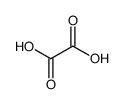

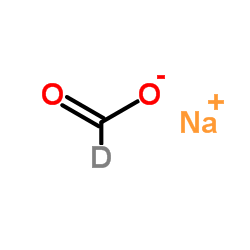
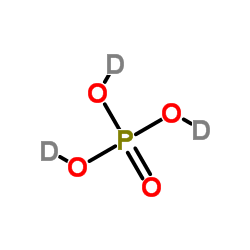
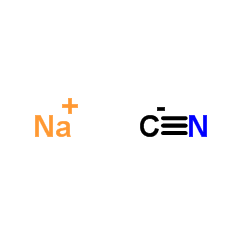

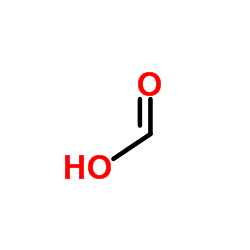


 CAS#:201230-82-2
CAS#:201230-82-2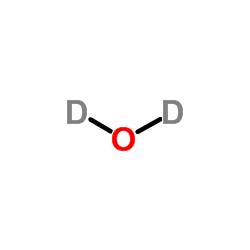 CAS#:7789-20-0
CAS#:7789-20-0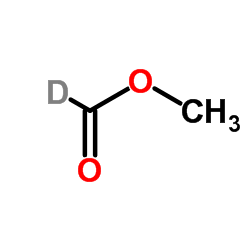 CAS#:23731-38-6
CAS#:23731-38-6 CAS#:107-18-6
CAS#:107-18-6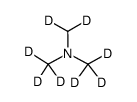 CAS#:35434-71-0
CAS#:35434-71-0 CAS#:13960-80-0
CAS#:13960-80-0 CAS#:102910-30-5
CAS#:102910-30-5
